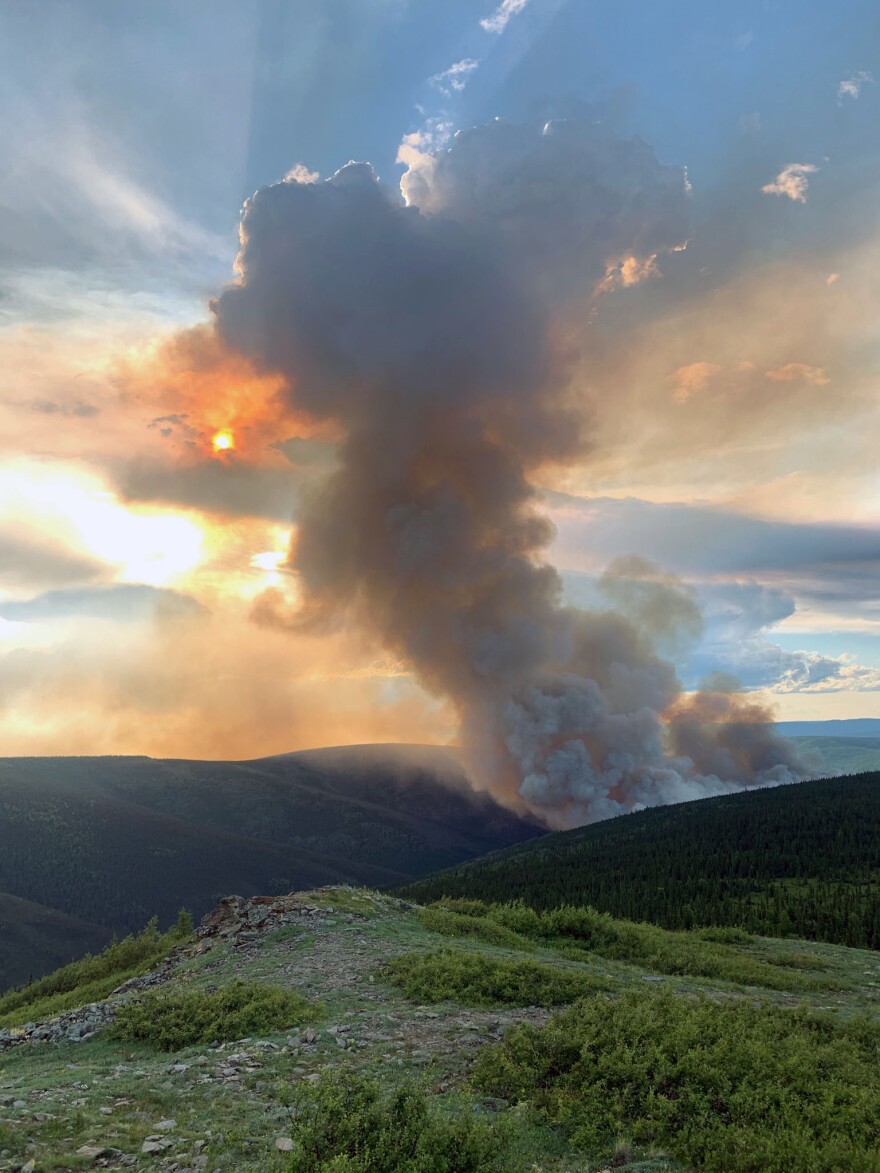The Fairbanks North Star Borough Assembly approved a resolution Thursday that established a task force that will put together a plan to deal with the impacts of climate change on the borough.
The Assembly adopted the resolution by an 8-to-1 vote, after more than three hours of testimony. All but a handful of the more than 50 people who spoke during a public hearing strongly urged passage of the measure. Like Rick Thoman, a climate specialist with the Alaska Center for Climate Assessment.
“This summer has been incredibly smoky,” he said. “I’m sure we all know that. This is the fifth time since 2004 that we’ve had more than three weeks of wildfire smoke. Prior to 2004, (over) the preceding half-century, that happened once.”
Thoman is a former meteorologist with the National Weather Service, and he said he’s seen dramatic changes in Fairbanks’s weather since he arrived in the early 1990s.
“Twenty-five years ago,” he said, “my family was concerned about driving in dense ice fog. About square tires and keeping the heat going. Now we worry about the freezing rain in the winter. Snow is coming later, melting sooner. We’ve got bugs flying around at Halloween. It didn’t used to be this way.”
Matthew Sturm is a geophysicist who worked with the Army’s Cold Regions Research and Engineering Laboratory on Fort Wainwright before becoming a professor with the University of Alaska Fairbanks’s Geophysical Institute. He says warming is accelerating the rate at which permafrost is thawing and causing infrastructure damage. He cites Goldstream Road, north of Fairbanks, which had major repairs just two years ago.
“And the road needs to be rebuilt again, right now,” he said. “There’s some axle-breakers already on it. Deep thermokarst pits form in a matter of weeks.”

Sturm says permafrost thaw also threatens portions of the Dalton Highway, the lifeline to the North Slope oilfields.
“I have to drive it several times a year for work,” he said, “and it, too, is falling apart at an alarming rate.”
Esau Sinnok is a UAF student who was born and raised in Shishmaref, a native community on the Seward Peninsula coast that’s collapsing into the Chukchi Sea because there’s not enough shorefast sea ice to protect the coastline from erosion.
So he says residents of the village have begun moving to another site a few miles inland.
“If you can just imagine having your entire home being relocated, from where you grew up,” Sinnok said.

Those testifying against the resolution cited concerns such as the cost of developing and implementing a plan. Tara Zhugar said it’s another example of government overreach, like the borough’s efforts to improve air quality, which local voters narrowly repealed last fall.
“Residents sent a pretty clear message when they voted powers away from the borough to regulate wood stoves,” Zhugar said. “People don’t trust this Assembly.”
Assembly member Aaron Lojewski, who voted against the resolution, cited some of same arguments. He said the borough should respond to specific local problems rather than appoint a task force to craft a broad climate-response plan in an attempt to ease the impacts of warming, which he doubts will be as bad as the testimony suggests.
“I almost feel like I’m hearing Chicken Little scream a little bit, because the sky’s falling,” he said.
But Leah Berman Williams, a co-sponsor of the measure, said the impact of warming has been well document by experts at the university and other agencies and organizations. She says the borough can tap into that local expertise to help with the climate plan, which she says will enable the borough to respond to the impacts of warming using such tools as land-use planning.
“That is of course exactly the point of developing a climate-action plan for the borough – to address specific areas,” she said.
Presiding officer Matt Cooper said the resolution is simply an effort to gain community support for a concerted effort to respond to climate change impacts on the borough and its residents.
“The purpose of this, as I understand it, is to figure out how we as a borough plan for the effects and deal with those effect,” he said. “And I think that’s just a matter of prudent community planning.”
The resolution calls for the task force to hold its first meeting by Nov. 15 to begin work on a climate-action plan that would be presented to the Assembly in the coming year. If approved, the borough’s plan would be the fourth to be adopted by an Alaskan municipality, after Juneau, Homer and Anchorage.



